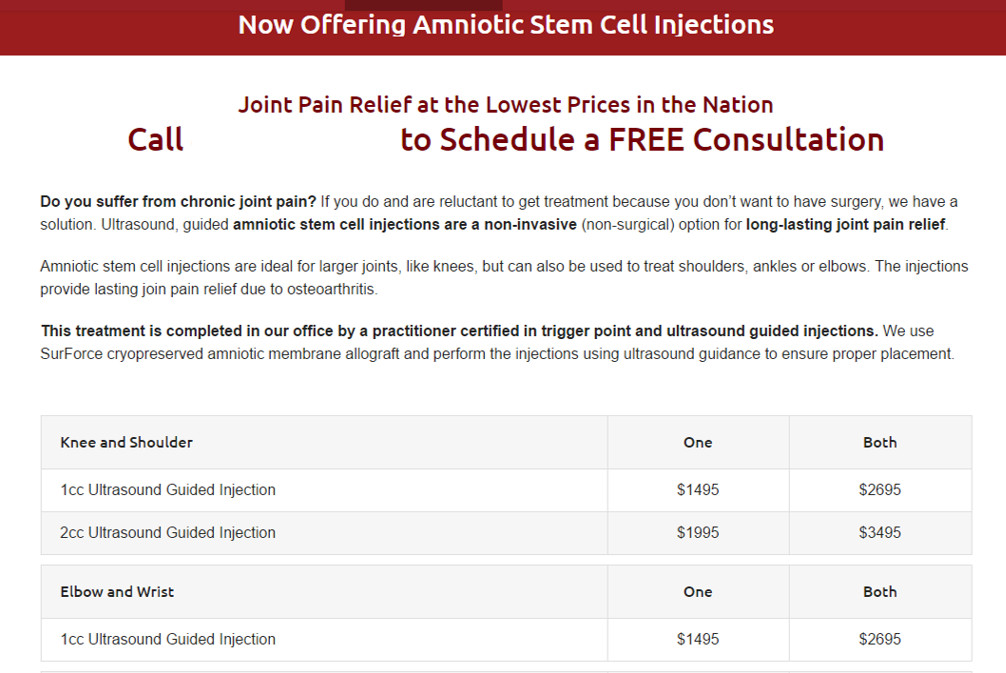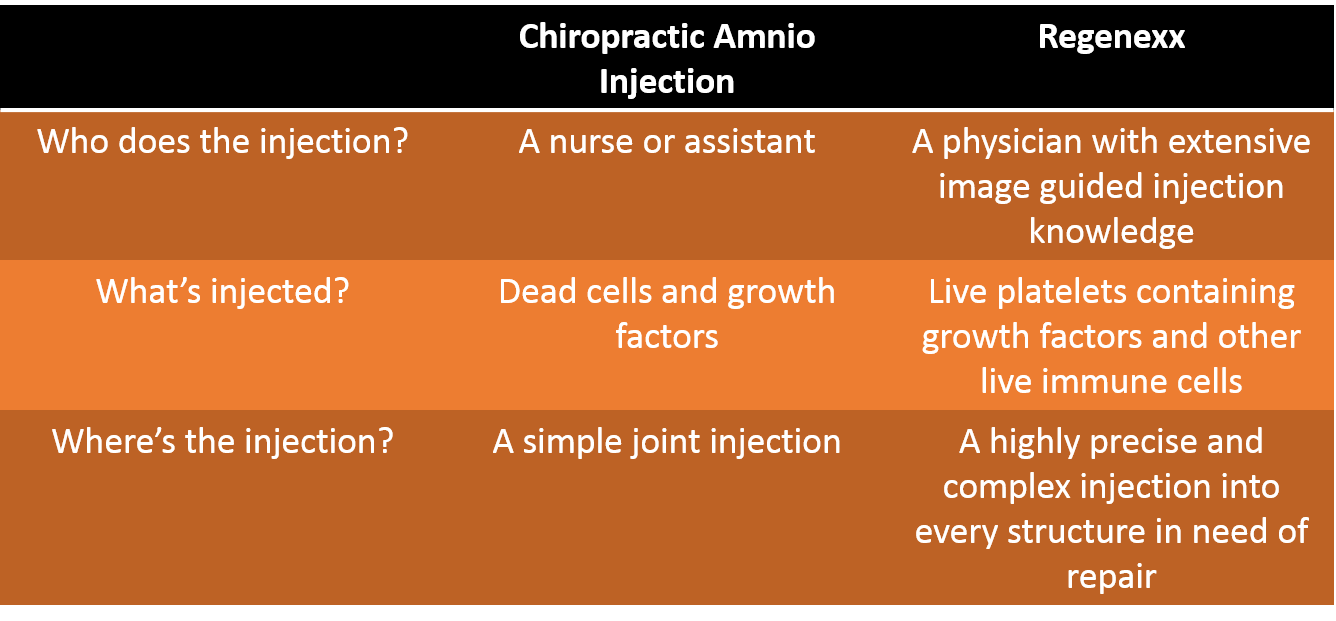Amniotic “Stem Cells”—Really Just an Expensive PRP Shot
We’re beginning to see chiropractors offering amniotic “stem cell” injections (the quotes are purposeful). This morning let’s look at what you get for the money you’ll pay for these injections. Like many things that seem like a bargain, you get what you pay for.
Before that, a little trip down memory lane. When I was a kid, a new and slick cookie gun came out that allowed you to pump out beautiful Christmas cookies in half the time! My siblings and I desperately wanted to get that for my mom, but it was out of our price range. We did save our pennies to get the Ronco version. It was “cordless” and looked great on TV. When it arrived, I’ll never forget seeing how shoddy it was. The device was a hunk of poorly constructed plastic that took so many D batteries that it was massive and unwieldy. My mom pretended to like it, but it wasn’t hard to see that what we had bought, based on a slick TV program, wasn’t what we thought. Lesson learned.
The Amniotic Stem Cell Scam
We began investigating amniotic stem cells a long time ago when sales reps approached us claiming to have magic bottles of young and living cells. We were pretty excited as if that were true, it might be important for our patients. However, since medical sales reps have the credibility of used-car salesmen, we made sure to perform the lab research to investigate the validity of these claims before we were willing to use this stuff in our patients. We began the project in our laboratory but then moved it to the Interventional Orthopedics Foundation. There were some things the IOF research scientists studied during this amniotic stem cell research, including the following:
- Did these products have any living cells?
- Did these products help older stem cells?
- Did these products have any growth factors that might be useful for patients?
Using sophisticated analytical equipment, the IOF found no living cells in these products. Despite many clinics advertising that these amniotic preps have live cells, the cells were dead! Also, these products didn’t help old cells perform better, and they didn’t have more growth factors than a straightforward and inexpensive PRP shot.
Getting Injections in Your Chiropractor’s Office—What Could Go Wrong?
Watch this video to understand some of the problems with these procedures:
Let’s Look at the Pricing
I recently came across a chiropractor who was advertising amniotic stem cell injections. What’s interesting is that he provides a menu-type price list and claims to have the lowest prices in the nation. So let’s look at what you get.
First, this office uses a product that claims to have some living stem cells, but when you look closely at the product info, there are significant issues. The product shows that the test the company used to determine the percentages of live/dead cells was horribly inaccurate, as it revealed that a comparison product that is known to have 100% dead cells had live cells! Hence, like all of the other amniotic stem cell products we have tested, this one is very unlikely to have any live and functional cells.
So what are you getting? You’re not getting a stem cell injection. Instead, you’re getting dead cells with a mix of growth factors. That’s actually less than you would get with a cheaper platelet rich plasma injection as there you would be getting fully functional platelets plus live and functional immune cells.
There are other issues here. Note that the term “provider” is used, not physician. This means that they will be bringing in a nurse practitioner or physician’s assistant. Also, the likelihood that this practitioner knows how to precisely place this expensive amniotic PRP shot in the rotator cuff is minuscule. The volumes/price tell you all you need to know there. For example, for a shoulder that has a rotator cuff tear, a little arthritis in the joint, and a swollen biceps, that’s not enough stuff to inject. The rotator cuff alone will require an injection of 2–5 cc, the joint another 1–2 cc, and the biceps 1–2 cc. Here all of that is supposed to be done with 1–2 cc? If that’s the case, what’s really being injected? My guess would be a simple subacromial bursa injection or intra-articular injection. Will this treat the rotator cuff tear, the biceps, and the joint? Nope. But the patient doesn’t know that. Will it help the shoulder feel better for a while? Maybe. But only a small portion of the long-term issues will be treated.
So let’s compare what’s being done here versus what you get for about the same price or less at Regenexx:
The upshot? So for just under two grand, you can get a nurse to perform a simple injection of dead tissue with growth factors in the general vicinity of your injury, basically the Ronco version of the real procedure. On the other hand, for less than that costs, you can get a highly trained physician to inject live platelets precisely into every single damaged area. Remember, you always get what you pay for!

If you have questions or comments about this blog post, please email us at [email protected]
NOTE: This blog post provides general information to help the reader better understand regenerative medicine, musculoskeletal health, and related subjects. All content provided in this blog, website, or any linked materials, including text, graphics, images, patient profiles, outcomes, and information, are not intended and should not be considered or used as a substitute for medical advice, diagnosis, or treatment. Please always consult with a professional and certified healthcare provider to discuss if a treatment is right for you.

